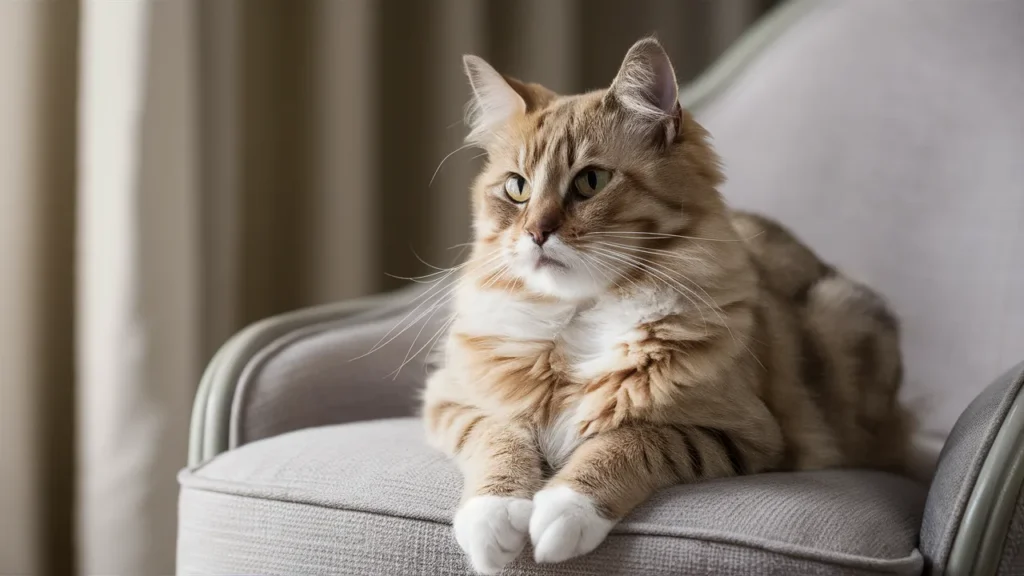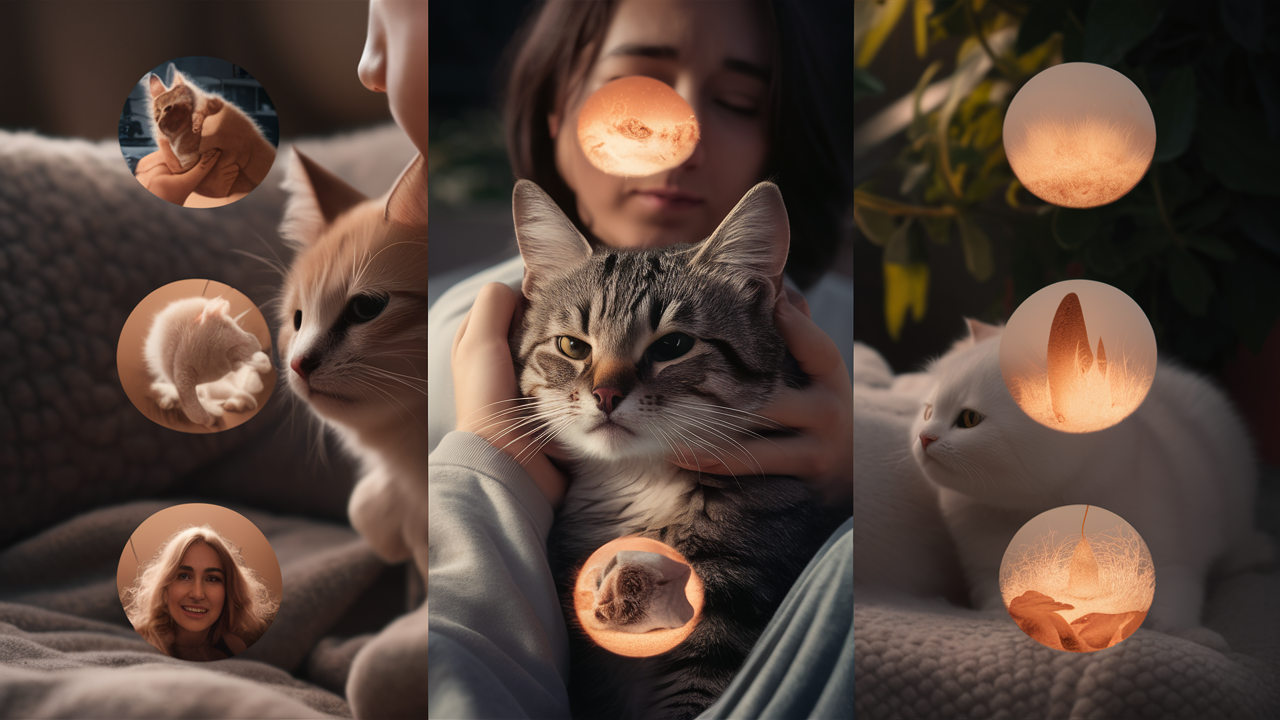Introduction
Making the heart-wrenching decision to put a beloved cat down is never easy. When it comes to liver disease, the complexities and emotional toll can be overwhelming. This guide aims to provide clarity on when to put a cat down with liver disease, helping you navigate through the medical, emotional, and ethical aspects of this tough decision.
What is Liver Disease in Cats?
Definition and Overview
Liver disease in cats is a broad term encompassing various conditions that impair liver function. The liver is crucial for detoxification, digestion, and metabolism, making its health vital to your cat’s overall well-being.
Common Types of Liver Disease
- Hepatic Lipidosis: Often known as fatty liver disease, it is one of the most common liver issues in cats.
- Cholangiohepatitis: Inflammation of the bile ducts and liver tissue.
- Hepatitis: Inflammation of the liver, which can be acute or chronic.
- Cirrhosis: Severe scarring of the liver tissue, usually due to prolonged liver damage.
Causes of Liver Disease in Cats
Dietary Factors
Poor diet can lead to obesity, which is a significant risk factor for hepatic lipidosis. Ensuring a balanced and nutritious diet is key to preventing liver issues.
Toxins and Poisons
Exposure to toxins, such as certain plants, medications, and chemicals, can cause acute liver failure. Common household items like antifreeze and certain foods like onions can be lethal.
Infections and Viruses
Bacterial infections and viruses, including Feline Infectious Peritonitis (FIP) and Feline Leukemia Virus (FeLV), can lead to liver complications.
Genetic Predispositions
Some breeds are genetically predisposed to liver disease. For example, Siamese cats are more prone to liver issues than other breeds.
Symptoms of Liver Disease in Cats
Early Warning Signs
- Loss of appetite
- Weight loss
- Vomiting and diarrhea
- Lethargy and weakness
Advanced Symptoms
- Jaundice (yellowing of the skin and eyes)
- Abdominal swelling
- Neurological issues such as seizures or disorientation
- Excessive thirst and urination
Diagnosis of Liver Disease
Veterinary Tests and Procedures
Diagnosing liver disease involves a combination of blood tests, urinalysis, imaging (such as ultrasound or X-rays), and sometimes liver biopsy. These tests help determine the extent and type of liver disease.
Interpreting Test Results
Understanding the test results can be complex. Elevated liver enzymes, bilirubin levels, and abnormal imaging results are indicators of liver dysfunction.
Treatment Options for Liver Disease
Medications
Medications may include antibiotics for infections, steroids for inflammation, and specific drugs to manage symptoms like nausea and vomiting.
Dietary Changes
A special diet that is easy to digest and rich in nutrients can help manage liver disease. Prescription diets specifically formulated for liver health are often recommended.
Surgical Interventions
In severe cases, surgery might be needed to remove a liver tumor or correct bile duct obstructions. However, surgery is often risky and depends on the overall health of the cat.
Prognosis for Cats with Liver Disease

Short-Term vs Long-Term Outlook
The prognosis depends on the type and severity of the liver disease. Acute conditions like toxin ingestion can have a rapid and severe impact, while chronic conditions may progress slowly over time.
Factors Influencing Prognosis
Age, overall health, response to treatment, and the type of liver disease all play a role in determining the prognosis. Better results are frequently achieved with early detection and treatment.
When to Consider Euthanasia
Quality of Life Considerations
When assessing your cat’s quality of life, consider factors like their ability to eat, drink, groom, and engage in normal activities. Chronic pain, persistent vomiting, and severe weight loss are signs that your cat’s quality of life is deteriorating.
Unmanageable Pain and Suffering
If your cat is in constant pain that cannot be managed with medication, or if they are suffering from severe neurological symptoms, it might be time to consider euthanasia.
Lack of Response to Treatment
When all treatment options have been exhausted and your cat’s condition continues to decline, euthanasia may be the most compassionate choice.
Emotional and Ethical Considerations
Dealing with Guilt and Grief
It’s natural to feel guilty or grieve deeply when making the decision to euthanize a pet. Remember, choosing to end their suffering is an act of love and compassion.
Ethical Responsibility as a Pet Owner
As a pet owner, it is your ethical duty to ensure your cat does not suffer needlessly. Making the decision to euthanize should always be centered around the best interest of your pet.
How to Make the Decision

Consulting with Your Veterinarian
Your veterinarian is the best resource for understanding your cat’s condition and prognosis. They can provide guidance on whether euthanasia is the most humane option.
Involving Family and Loved Ones
Discussing the situation with family members can provide emotional support and help ensure that everyone is on the same page regarding the decision.
Making a Peaceful Decision
Consider the timing and setting for euthanasia. Choosing a calm, familiar environment can make the process less stressful for your cat and for you.
Preparing for Euthanasia
Setting Up the Environment
For your cat’s last moments, create a calm and cozy environment. This might include their favorite blanket, toys, and the presence of loved ones.
Explaining to Children and Other Pets
If you have children or other pets, explain the situation in an age-appropriate way.Having other pets say farewell can make the loss easier for them to accept and deal with.
The Euthanasia Process
What to Expect During the Procedure
Euthanasia is a painless process. The veterinarian will administer a sedative to relax your cat, followed by a medication that gently stops the heart.
Immediate Aftercare
After the procedure, you can choose to take your cat home for burial, or you may opt for cremation. Many veterinary offices offer resources for aftercare and memorial services.
Coping After Euthanasia
Emotional Support and Counseling
Grieving is a natural part of losing a pet. Consult your loved ones, friends, or pet loss support organizations for assistance. Professional counseling can also be beneficial.
Memorializing Your Pet
Creating a memorial, such as a photo album, a dedicated space in your garden, or a personalized keepsake, can help you cherish the memories of your beloved cat.
Preventing Liver Disease in Cats
Regular Veterinary Check-Ups
Routine check-ups can help detect liver disease early, improving the chances of successful treatment. Frequent physical examinations and blood testing are essential.
Healthy Diet and Lifestyle
Feeding your cat a balanced diet, maintaining a healthy weight, and preventing exposure to toxins are key to preventing liver disease.
Conclusion
Reflecting on the journey of owning a cat with liver disease is emotional and challenging. Even though it is a very tough decision, putting your cat to sleep is frequently the most humane course of action when unbearable pain and suffering are present. To make the greatest choice for your pet, put your faith in your affection for them and the advice of your veterinarian.
FAQs
What are the early signs of liver disease in cats?
Early signs include loss of appetite, weight loss, vomiting, diarrhea, lethargy, and weakness.See your veterinarian right away if you observe these symptoms.
Can liver disease in cats be cured?
Some forms of liver disease can be managed or treated, especially if caught early. However, chronic conditions may require long-term care and management.
When to Put a Cat Down with Liver Disease?
The lifespan of a cat with liver disease varies widely based on the type and severity of the disease, the cat’s overall health, and how well they respond to treatment.
When my cat won’t eat, what should I do?
Loss of appetite is a serious concern. Offer tempting, high-quality foods and consult your veterinarian. They might suggest appetite suppressants or other measures.
How do I know if my cat is in pain?
Signs of pain in cats include vocalizing, hiding, reduced activity, aggression, and changes in grooming habits. If you suspect your cat is in pain, seek veterinary advice.
